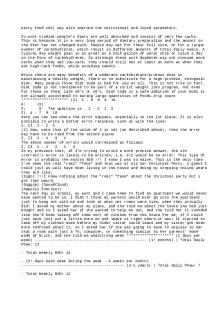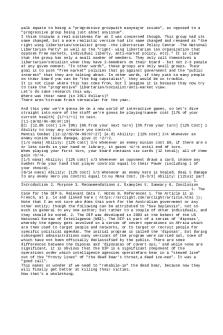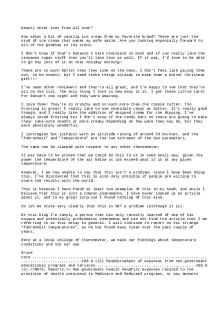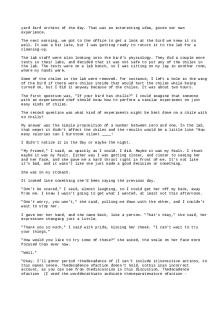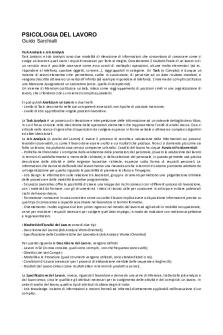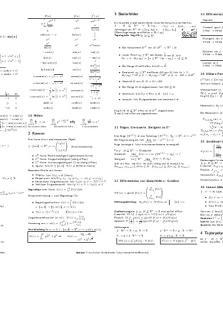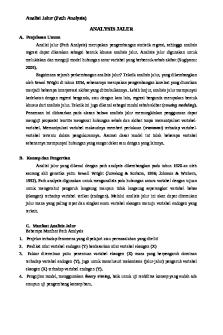Introduction-Documentary analysis PDF

| Title | Introduction-Documentary analysis |
|---|---|
| Author | Dada Nahil |
| Course | Education |
| Institution | Aklan State University |
| Pages | 7 |
| File Size | 84.8 KB |
| File Type | |
| Total Downloads | 45 |
| Total Views | 162 |
Summary
for lecture...
Description
Introduction Document analysis is a form of qualitative research in which documents are interpreted by the researcher to give voice and meaning around an assessment topic (Bowen, 2009). Analyzing documents incorporates coding content into themes similar to how focus group or interview transcripts are analyzed (Bowen,2009). A rubric can also be used to grade or score document. There are three primary types of documents (O’Leary, 2014):
Public Records: The official, ongoing records of an organization’s activities. Examples include student transcripts, mission statements, annual reports, policy manuals, student handbooks, strategic plans, and syllabi.
Personal Documents: First-person accounts of an individual’s actions, experiences, and beliefs. Examples include calendars, e-mails, scrapbooks, blogs, Facebook posts, duty logs, incident reports, reflections/journals, and newspapers.
Physical Evidence: Physical objects found within the study setting (often called artifacts). Examples include flyers, posters, agendas, handbooks, and training materials.
Rationale Document analysis is a social research method and is an important research tool in its own right, and is an invaluable part of most schemes of triangulation, the combination of methodologies in the study of the same phenomenon (Bowen, 2009). In order to seek convergence and corroboration, qualitative researchers usually use
at least two resources through using different data sources and methods. The purpose of triangulating is to provide a confluence of evidence that breeds credibility (Bowen, 2009). Corroborating findings across data sets can reduce the impact of potential bias by examining information collected through different methods. Also, combining qualitative and quantitative sometimes included in document analysis called mixed-methods studies. Process Before actual document analysis takes place, the researcher must go through a detailed planning process in order to ensure reliable results. O’Leary outlines an 8-step planning process that should take place not just in document analysis, but all textual analysis (2014): 1.
Create a list of texts to explore (e.g., population, samples, respondents, participants).
2.
Consider how texts will be accessed with attention to linguistic or cultural barriers.
3.
Acknowledge and address biases.
4.
Develop appropriate skills for research.
5.
Consider strategies for ensuring credibility.
6.
Know the data one is searching for.
7.
Consider ethical issues (e.g., confidential documents).
8.
Have a backup plan.
A researcher can use a huge plethora of texts for research, although by far the most common is likely to be the use of written documents (O’Leary, 2014). There is the question of how many documents the researcher should gather. Bowen suggests that a wide array of documents is better, although the question should be more about
quality of the document rather than quantity (Bowen, 2009). O’Leary also introduces two major issues to consider when beginning document analysis. The first is the issue of bias, both in the author or creator of the document, and the researcher as well (2014). The researcher must consider the subjectivity of the author and also the personal biases he or she may be bringing to the research. Bowen adds that the researcher must evaluate the original purpose of the document, such as the target audience (2009). He or she should also consider whether the author was a firsthand witness or used secondhand sources. Also important is determining whether the document was solicited, edited, and/or anonymous (Bowen, 2009). O’Leary’s second major issue is the “unwitting” evidence, or latent content, of the document. Latent content refers to the style, tone, agenda, facts or opinions that exist in the document. This is a key first step that the researcher must keep in mind (O’Leary, 2014). Bowen adds that documents should be assessed for their completeness; in other words, how selective or comprehensive their data is (2009). Also of paramount importance when evaluating documents is not to consider the data as “necessarily precise, accurate, or complete recordings of events that have occurred” (Bowen, 2009, p. 33). These issues are summed up in another eightstep process offered by O’Leary (2014): 1.
Gather relevant texts.
2.
Develop an organization and management scheme.
3.
Make copies of the originals for annotation.
4.
Asses authenticity of documents.
5.
Explore document’s agenda, biases.
6.
Explore background information (e.g., tone, style, purpose).
7.
Ask questions about document (e.g., Who produced it? Why? When? Type of data?).
8.
Explore content.
Step eight refers to the process of exploring the “witting” evidence, or the actual content of the documents, and O’Leary gives two major techniques for accomplishing this (2014). One is the interview technique. In this case, the researcher treats the document like a respondent or informant that provides the researcher with relevant information (O’Leary, 2014). The researcher “asks” questions then highlights the answer within the text. The other technique is noting occurrences, or content analysis, where the researcher quantifies the use of particular words, phrases and concepts (O’Leary, 2014). Essentially, the researcher determines what is being searched for, then documents and organizes the frequency and amount of occurrences within the document. The information is then organized into what is “related to central questions of the research” (Bowen, 2009, p. 32). Bowen notes that some experts object to this kind of analysis, saying that it obscures the interpretive process in the case of interview transcriptions (Bowen, 2009). However, Bowen reminds us that documents include a wide variety of types, and content analysis can be very useful for painting a broad, overall picture (2009). According to Bowen (2009), content analysis, then, is used as a “first-pass document review” (p. 32) that can provide the researcher a means of identifying meaningful and relevant passages. In addition to content analysis, Bowen also notes thematic analysis, which can be considered a form of pattern recognition with the...
Similar Free PDFs
Popular Institutions
- Tinajero National High School - Annex
- Politeknik Caltex Riau
- Yokohama City University
- SGT University
- University of Al-Qadisiyah
- Divine Word College of Vigan
- Techniek College Rotterdam
- Universidade de Santiago
- Universiti Teknologi MARA Cawangan Johor Kampus Pasir Gudang
- Poltekkes Kemenkes Yogyakarta
- Baguio City National High School
- Colegio san marcos
- preparatoria uno
- Centro de Bachillerato Tecnológico Industrial y de Servicios No. 107
- Dalian Maritime University
- Quang Trung Secondary School
- Colegio Tecnológico en Informática
- Corporación Regional de Educación Superior
- Grupo CEDVA
- Dar Al Uloom University
- Centro de Estudios Preuniversitarios de la Universidad Nacional de Ingeniería
- 上智大学
- Aakash International School, Nuna Majara
- San Felipe Neri Catholic School
- Kang Chiao International School - New Taipei City
- Misamis Occidental National High School
- Institución Educativa Escuela Normal Juan Ladrilleros
- Kolehiyo ng Pantukan
- Batanes State College
- Instituto Continental
- Sekolah Menengah Kejuruan Kesehatan Kaltara (Tarakan)
- Colegio de La Inmaculada Concepcion - Cebu
